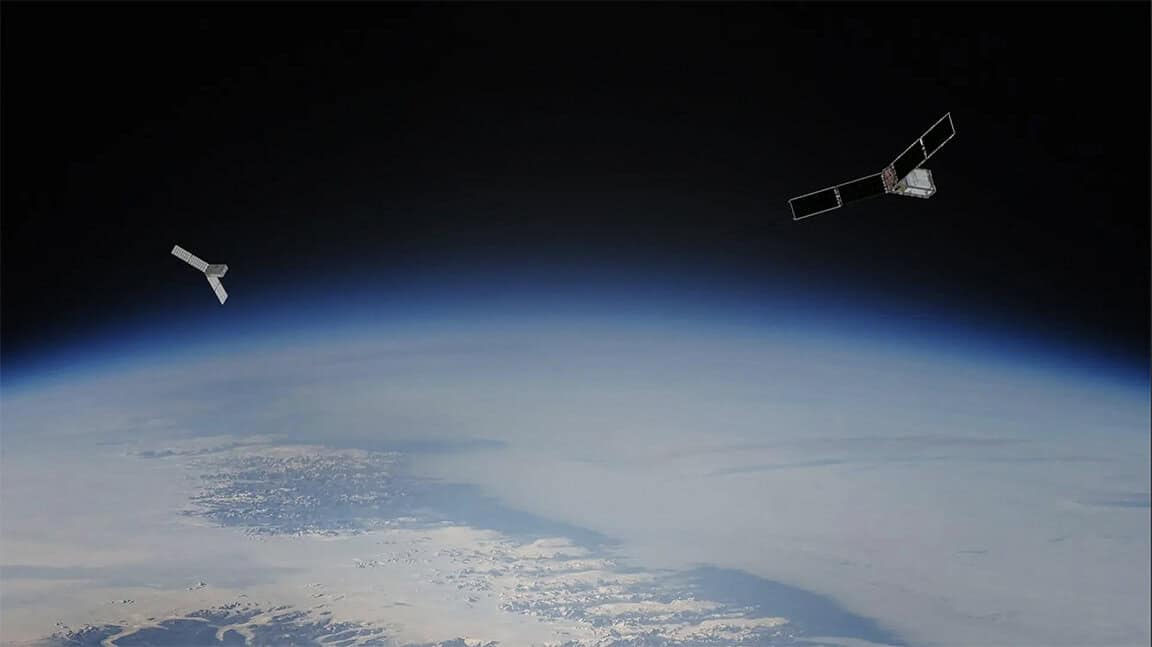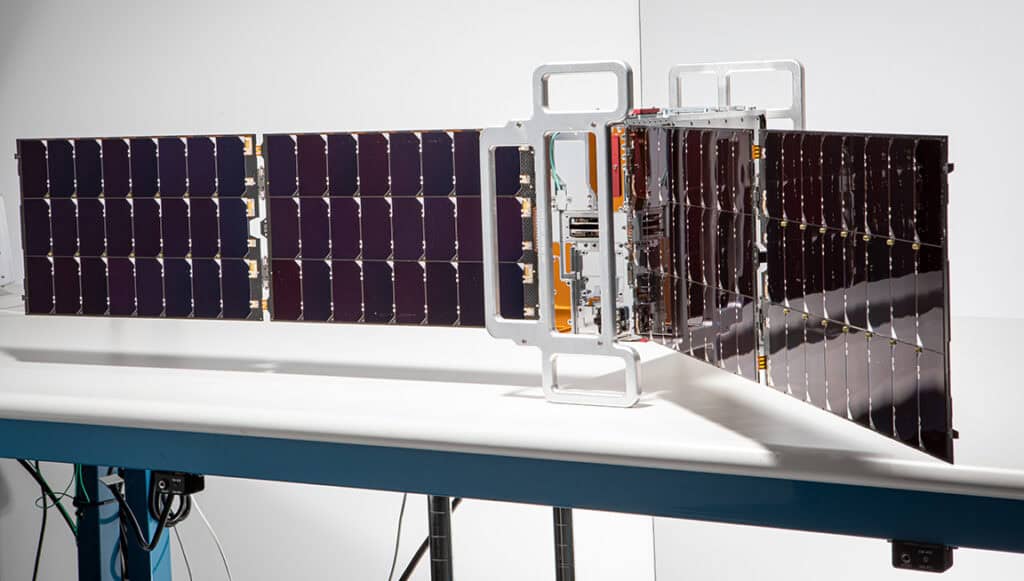
New Mission Studies Arctic Heat Emissions As Never Before
Two researchers from U-M Climate and Space are working on the PREFIRE mission, to better understand the heat that radiates from Earth at the polar regions.

Two researchers from U-M Climate and Space are working on the PREFIRE mission, to better understand the heat that radiates from Earth at the polar regions.
Two scientists at the U-M Department of Climate and Space are among a team working on a new NASA mission that aims to improve global climate change predictions by expanding our understanding of the heat that radiates from Earth at the polar regions. Professor Xianglei Huang, Ph.D., and Aronne Merrelli, Ph.D., an associate research scientist, are co-investigators on the PREFIRE mission, also known as the Polar Radiant Energy in the Far-InfraRed Experiment.
The Arctic region behaves as if it is a thermostat for the Earth, regulating the climate by releasing excess energy that’s received in the tropics. For the first time, the PREFIRE mission will document the variability in spectral fluxes on hourly to seasonal timescales, helping scientists better understand the polar climate — and its implications for the climate more broadly.
Nearly 60 percent of radiation emitted by the Arctic occurs at wavelengths greater than 15 μm, a region known as the far-infrared that has never been systematically measured. Using two cube-sats, each the size of a shoebox, the PREFIRE mission measures these wavelengths to determine the radiant energy emitted by Earth, which may hold clues about sea ice loss, sea level rise, and ice-sheet melting, not to mention warming in the Arctic.
“The PREFIRE mission joins more than two dozen other NASA Earth science missions,” said Dr. Karen St. Germain, who is the Director of the Earth Science Division at NASA, in a press briefing on May 15. “The scientific research and analysis from these missions enables us to better understand how the whole Earth works as a system.”

“Far-infrared radiation from our own planet has never been observed spectrally in its entirety. This is the last uncharted ‘territory’ in terms of remote sensing of Earth from space,” said Huang. “PREFIRE is filling this gap. It will be the first-ever global measurement of spectral radiation in almost the entire Far-IR region.”
The mission is also bringing climate modelers onto the project in the early stages, an uncommon practice that will help shape the work as it unfolds. PREFIRE is a small mission, which launched the twin cube-sats in May and June, but the scientists working on the project will study Far-InfraRed conditions from many perspectives. Huang’s group will be responsible for developing two products for the mission, the Spectral Flux and Surface Spectral Emissivity.
“These are key level-2 products that can be used to characterize the longwave radiation budget in the polar region, especially for the Far-InfraRed region that have not been explicitly observed before,” said Huang.
These observations are important to understanding the surface climate in the polar regions, as Huang and other researchers have demonstrated in earlier studies. Meanwhile, Merrelli will work on Clear Sky Atmospheric Retrieval.
“Scientifically, we’re most interested in the surface properties and the energy balance at the surface,” said Merrelli. “We can measure how much thermal energy is being emitted, and how the balance of those impacts affects whether or not the surface warms or cools.”
“If you look at a lot of the infrared missions that have been done in the Earth Sciences up to now, the missions are mostly limited to wavelengths smaller than 15 or 16 μm,” said Merrelli. “That’s practically within the typical 8-15 μm infrared window, which we know a lot about. With the new mission, we’re able to do this groundbreaking work because of the considerable innovations in the infrared detectors, which were built in a specialized lab at NASA’s Jet Propulsion Laboratory.”
The first full, post-launch meeting of the PREFIRE science team takes place on August 8. In addition to learning more about the Earth’s energy balance, the results will allow them to improve climate models for the polar regions and the rest of the world.
“One thing that I’ve found is really unique about this mission is even as an algorithm developer I’ve been able to work on a wide variety of tasks, even in helping to translate the raw data,” said Merrelli. “It’s interesting to see the full life cycle of a whole project, and to be able to see it in full detail. We’ve included many graduate students, as well, bringing them in to help on a lot of different stages of the project. With PREFIRE, we’re training future young scientists in how you can run these kinds of missions.”
The PREFIRE mission is led by Principal Investigator Tristan L’Ecuyer, Ph.D., at the University of Wisconsin-Madison, in partnership with NASA’s Jet Propulsion Laboratory in Southern California.